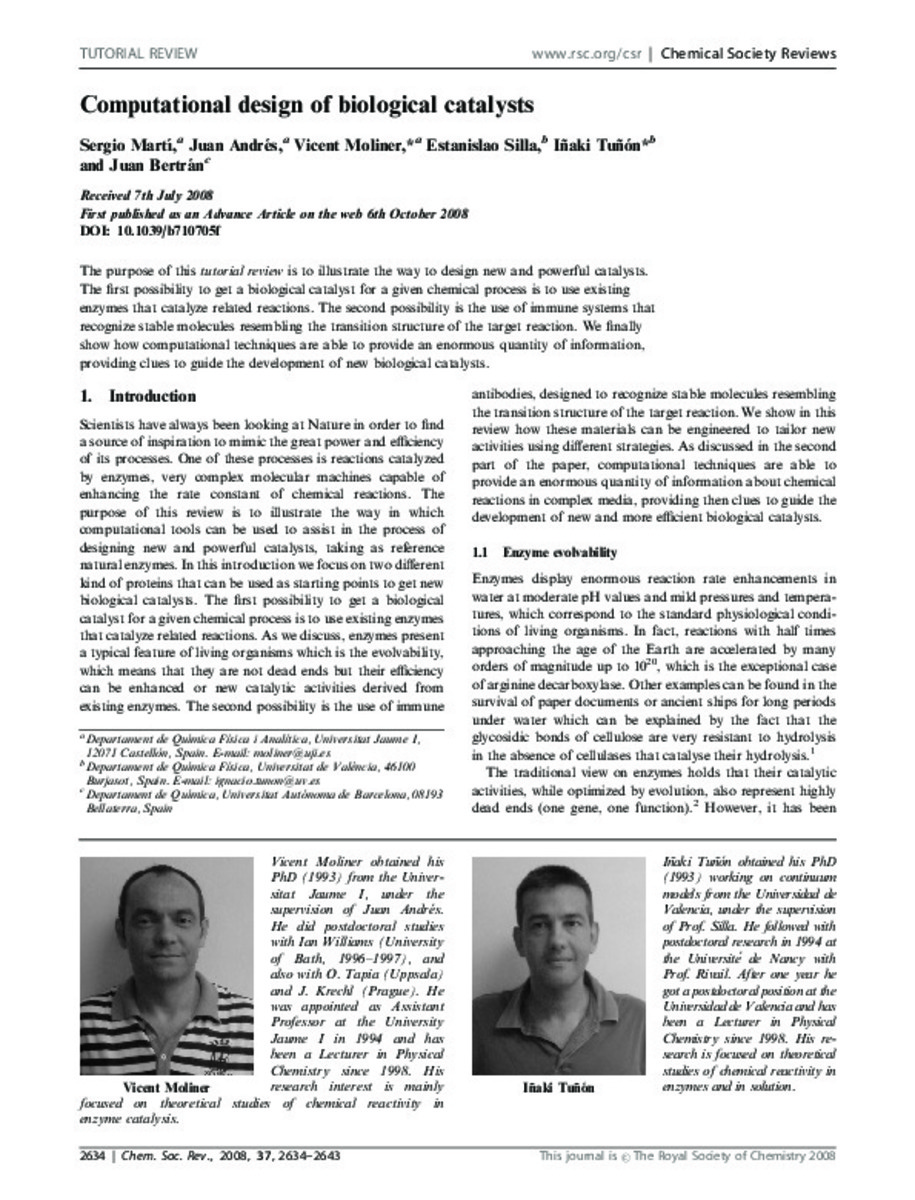Mostrar el registro sencillo del ítem
Computational design of biological catalysts
| dc.contributor.author | Martí Forés, Sergio | |
| dc.contributor.author | Andres, Juan | |
| dc.contributor.author | Moliner, Vicent | |
| dc.contributor.author | Silla, Estanislao | |
| dc.contributor.author | Tuñón, Iñaki | |
| dc.contributor.author | Bertrán, Juan | |
| dc.date.accessioned | 2010-03-31T09:35:36Z | |
| dc.date.available | 2010-03-31T09:35:36Z | |
| dc.date.issued | 2008 | |
| dc.identifier.issn | 03060012 | |
| dc.identifier.uri | http://hdl.handle.net/10234/10274 | |
| dc.description.abstract | The purpose of this tutorial review is to illustrate the way to design new and powerful catalysts. The first possibility to get a biological catalyst for a given chemical process is to use existing enzymes that catalyze related reactions. The second possibility is the use of immune systems that recognize stable molecules resembling the transition structure of the target reaction. We finally show how computational techniques are able to provide an enormous quantity of information, providing clues to guide the development of new biological catalysts | en |
| dc.format.extent | 9 p. | |
| dc.language.iso | eng | en |
| dc.publisher | Royal Society of Chemistry | en |
| dc.relation.isPartOfSeries | Chemical Society reviews; núm. 37 | |
| dc.rights.uri | http://rightsstatements.org/vocab/CNE/1.0/ | * |
| dc.subject.other | Biologia molecular | |
| dc.title | Computational design of biological catalysts | en |
| dc.type | info:eu-repo/semantics/article | en |
| dc.audience | Química | |
| dc.rights.accessRights | info:eu-repo/semantics/openAccess | |
| dc.type.version | info:eu-repo/semantics/publishedVersion | ca_CA |
Ficheros en el ítem
Este ítem aparece en la(s) siguiente(s) colección(ones)
-
QFA_Articles [817]
Articles de publicacions periòdiques







